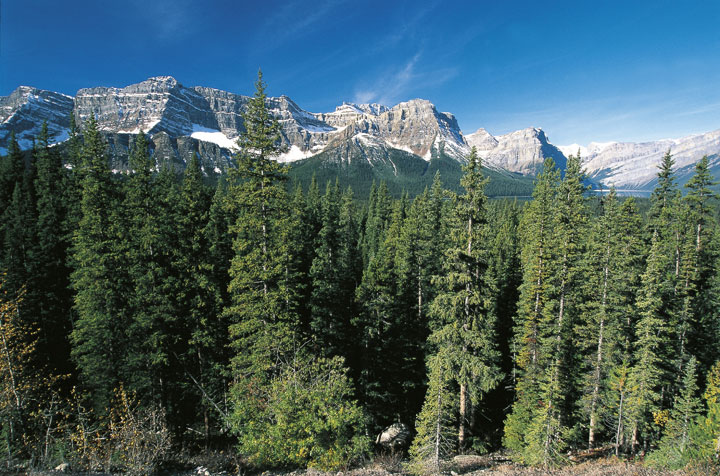A group of top international scientists says Canada needs to dramatically up its conservation game to ensure its vast northern forests remain healthy in the face of increasing industrial pressure.

In a paper to be presented today at the International Congress of Conservation Biology in Baltimore, Md., its authors argue that Canada needs to preserve about half of its boreal forest. That’s significantly more than the 10 per cent level researchers previously thought was necessary to conserve natural systems.
“Conservation science has caught up to an understanding of what is really needed,” said Jeffs Wells, a scientist with the Boreal Songbird Initiative and one of 23 researchers from Canada and around the world who contributed to the paper.
“We need to have much larger spaces than was ever realized.”
Scientists used to set conservation goals by looking at single species or representative slices of landscape, Wells said.
“They didn’t really think about how interconnected places were and how animals moved across the landscape, how water flow is affected, all of those sorts of things.
As we started to look at multiple species, whole ecosystems and how they function, we now know that it’s not really possible to maintain all those values without
really thinking about much bigger scales of conservation.”
The boreal forest is a huge stretch of green that runs across the northern part of most provinces and the southern tips of the territories. Its 5.8 million square kilometres of forests, taiga, tundra, peatlands, salt marshes, rivers and lakes include the largest blocks of intact forest and wetlands left on Earth – more than half the world’s intact boreal forest and its largest area of surface freshwater.
- Invasive strep: ‘Don’t wait’ to seek care, N.S. woman warns on long road to recovery
- Ontario First Nation declares state of emergency amid skyrocketing benzene levels
- Do Canadians have an appetite for electric vehicles? Experts are divided
- Nearly 200 fossil fuel, chemical lobbyists to join plastic treaty talks in Ottawa
It’s also home to caribou, grizzlies, wolverines, lynx and wolves as well as to many aboriginal communities that depend on it for food and cultural sustenance.
The report notes increasing industrial activity.
The authors say about 730,000 square kilometres have already been disturbed by oil and gas, mining, forestry and hydro development. Many boreal species from woodland caribou to Atlantic salmon to Canada warblers appear on at-risk lists.
Canada had the world’s largest share of mineral exploration spending in 2011. Much of that probing was in the boreal forest.
Also at risk are “ecological services” such as water quality and marine productivity in places such as the Great Lakes, said Wells. Development also releases carbon stored in the boreal forest, which aggravates climate change.
Wells acknowledged that setting aside half that ecosystem will involve tough choices.
Agreements already made, such as the Canadian Boreal Forest Initiative signed between environmental groups and forestry companies, have frayed under implementation pressures. Attempts by aboriginal groups to use land claims to establish large protected areas have been resisted by governments.
But it’s possible to have both conservation and economic development, said Wells.
“There are massive areas still open for development. We know that these northern communities need continued economic opportunities.”
The paper says local communities, including aboriginal groups, should have an important say in development. It adds that land-use planning that takes into account connections between watersheds, ecological zones and migration paths should come before lands are opened to exploration or development.
Rigorous environmental monitoring that also watches for cumulative effects should be conducted and developers should strive for minimum impacts.
“You can’t get away from the facts,” Wells said. “And the facts are that if we want to maintain these values, then that’s what we have to do.”
Proper conservation is an investment, not a cost, he said.
“A balanced approach to conservation is avoiding the mistakes that other countries have made that they are paying for now.”

Comments